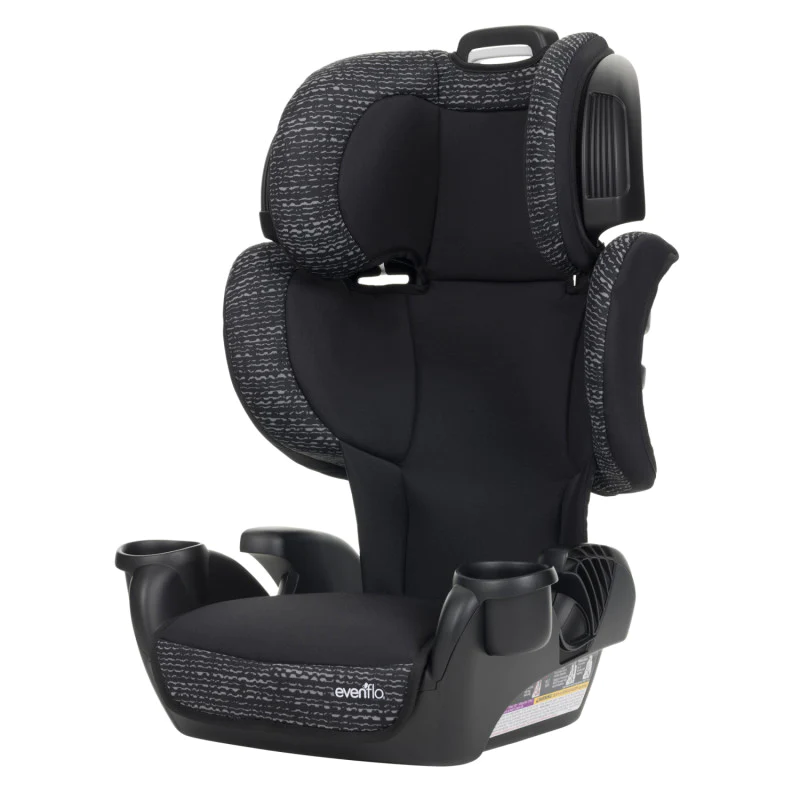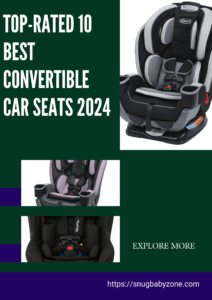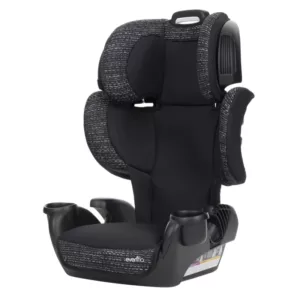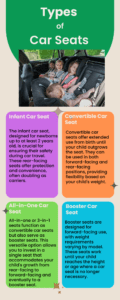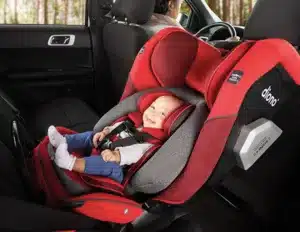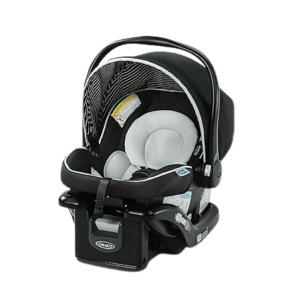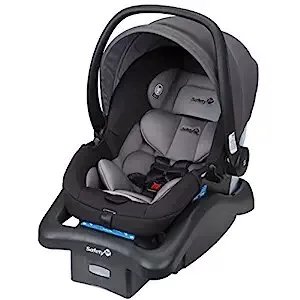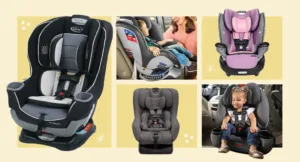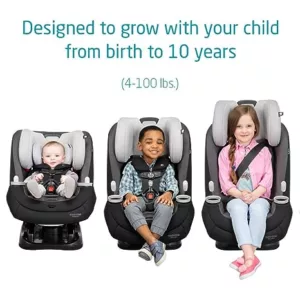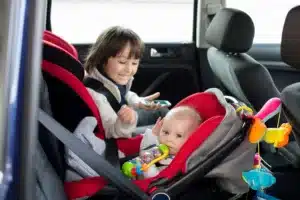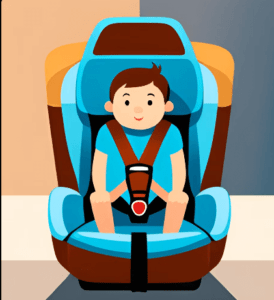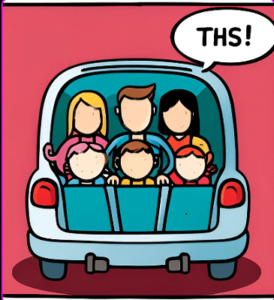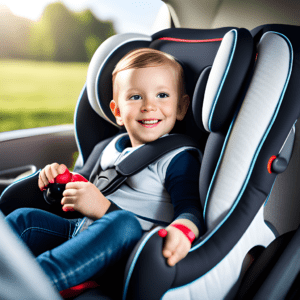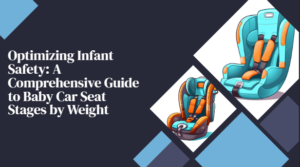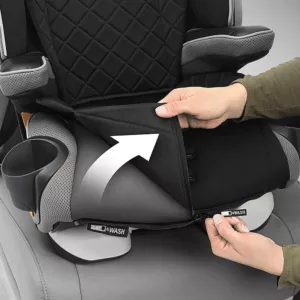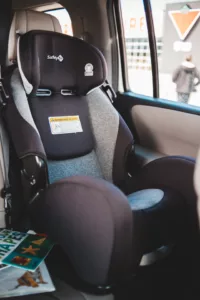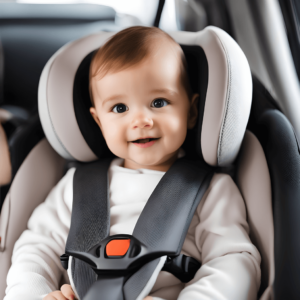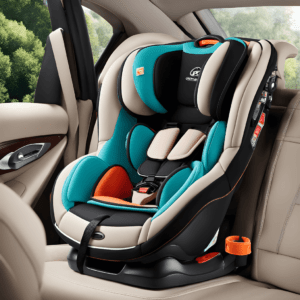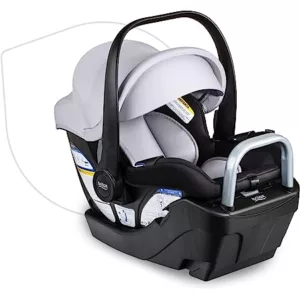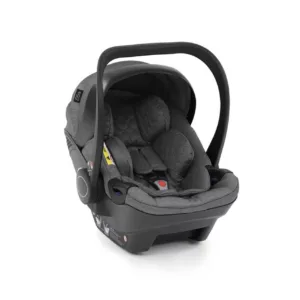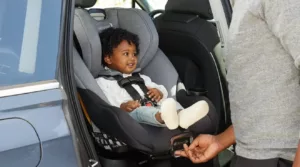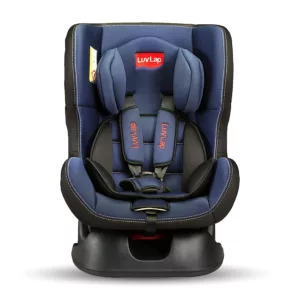What is a Booster Car Seat? A booster car seat is a crucial tool in ensuring the safety of older children during car journeys.
Thank you for reading this post, don't forget to subscribe!
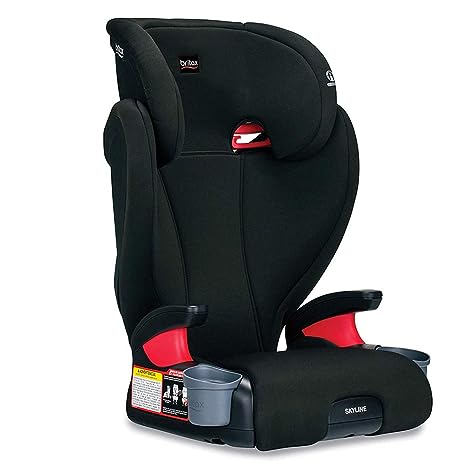
Designed to provide proper positioning and restraint, a booster seat elevates your child to the right height, enabling the vehicle’s seat belt to fit them securely. As children outgrow their convertible car seats, booster baby car seats step in to bridge the gap, offering a safe and comfortable solution for a smooth transition into the world of adult seat belts.
Table of Contents
ToggleWhat are the Features of a Classic Booster baby Car seat? – Toddler Booster Car Seat
Booster car seats are designed to elevate a child to the proper height, allowing the vehicle’s seatbelt to fit correctly across their body. Here are the essential features that booster baby car seats should have:
1. High-Back and Backless Options – Booster Seat Comfort
High-back boosters provide head and neck support, especially for children who fall asleep during the ride.
Backless boosters are more compact and suitable for older children who no longer need the extra head support.
2. Side-Impact Protection – Booster Baby Car Seats Safety
Some high-back boosters offer side-impact protection, providing an additional layer of safety in the event of a collision from the side.
3. LATCH (Lower Anchors and Tethers for Children) System (for high-back boosters)
Some high-back boosters come with a LATCH system to secure the booster to the vehicle when it is unoccupied, preventing it from becoming a projectile during an accident.
4. Weight and Height Limits – Booster Car seats age
Booster seats are suitable for children typically around the ages of 4 to 12 years old. Check the booster seat’s weight and height limits to ensure that it is suitable for your child’s size and age.
5. Belt-Positioning Clip (for backless boosters)
Backless boosters should have a belt-positioning clip to ensure that the vehicle’s seatbelt fits properly across the child’s lap and shoulder.
6. Removable and Machine-Washable Cover
Easy-to-remove and machine-washable seat covers make cleaning spills and messes convenient for parents.
7. Expiry Date – Booster Car Seats Transition
Like all car seats, booster baby car seats have an expiry date. Check the manufacturer’s guidelines to know when it is time to replace the booster seat.
8. Certification and Safety Standard
Look for booster baby car seats that meet safety standards and certifications set by regulatory organizations, such as NHTSA or JPMA (Juvenile Products Manufacturers Association).
9. Travel-Friendly Design – Booster Car Seat for Travel
Some booster baby car seats are designed to be lightweight and easy to transport, making them suitable for travel or carpooling.
10. User-Friendly Installation – Best-Rated Booster Baby Car Seats
Booster baby car seats should be easy to install in the vehicle, whether using the LATCH system (for high-back boosters) or simply placing them on the vehicle seat (for backless boosters).
11. Comfortable Padding – Comfortable Booster Car Seat
Soft and comfortable padding ensures that the child remains cozy during the ride.
12. Cup Holders or Storage Pockets
Some booster baby car seats come with built-in cup holders or storage pockets for convenience.
Always ensure that the booster seat is used correctly and that the child is within the height, weight, and age limits specified by the manufacturer. Follow the instructions and guidelines provided by the manufacturer for proper installation and usage to maximize the booster seat’s safety and effectiveness.
What are the Features of Backless and High-Back Booster Car Seats? Understanding Its Purpose and Design
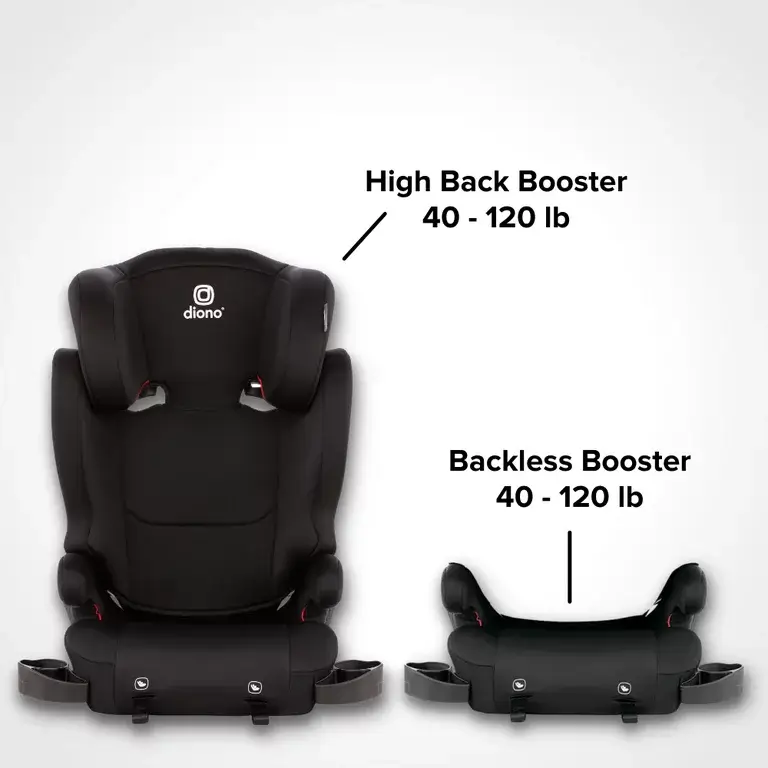
Booster car seats elevate the child to the correct height, ensuring the vehicle’s seat belt fits them snugly and securely. They come in two main types:
- Backless boosters
- High-back boosters.
Each type offers unique features, catering to different needs and preferences. Let’s explore the characteristics of these booster car seats to understand their distinctions and find the ideal fit for your child’s safety and comfort.
| Features | Backless Booster | High-Back Booster |
| Seat Elevation | Provides seat elevation for proper seat belt fit. | Provides seat elevation for proper seat belt fit. |
| Head and Neck Support | Does not provide built-in head and neck support. | Offers built-in head and neck support for added comfort, particularly for sleeping children. |
| Suitable Age Range | Typically suitable for older children, around 4 to 10 years old. | Suitable for younger and older children, around 4 to 12 years old. |
| Portability | Lightweight and easy to move between cars or for travel. | Heavier and less portable compared to backless boosters. |
| Adjustability | Generally have no adjustable features. | Some models offer additional side-impact protection for enhanced safety. |
| Side-Impact Protection | Provides minimal side-impact protection. | Some models offer additional side-impact protection for enhanced safety. |
| Comfort | It has less padding and cushioning compared to high-back boosters. | Usually have more padding and cushioning for a comfortable ride. |
| Versatility | Offers a more grown-up feel for older children who don’t need head support. | Suitable for children who still require head and neck support during car journeys. |
| Cost | Typically more affordable compared to high-back boosters. | Generally more expensive due to additional features and comfort. |
| Installation | Easy installation process. | Installation process may involve securing the back to the vehicle’s seat. |
| Safety Certifications | Meets safety standards and regulations for booster seats. | Meets safety standards and regulations for booster seats. |
Backless and high-back boosters are essential to elevating the child to the correct height for proper seat belt use. The choice between the two depends on the child’s age, size, comfort preferences, and the family’s lifestyle. Both booster seats provide a safe and reliable solution for ensuring the child’s safety during car journeys.
High-Back Booster Vs. Backless Booster: Understanding the Differences
When choosing a booster baby car seat, one must consider the two main types available: high-back boosters and backless boosters. Each type has its own set of advantages and considerations:
High-Back Booster | Backless Booster |
| • Offers head and neck support, particularly for children who fall asleep during car rides. | • They are more convenient and portable, making it easier to move between cars or travel. |
| • Provides a more secure and comfortable seating position, especially for smaller children. | • Suitable for older children who no longer need head and neck support. |
| • Some high-back boosters have adjustable headrests and side-impact protection, enhancing safety features. | • It may be preferred by children who want a more grown-up feel during car rides. |
Choosing between a high-back booster and a backless booster depends on various factors, such as the child’s age, size, comfort, and personal preferences. Both types of boosters provide the necessary elevation to ensure the vehicle’s seat belt fits correctly on the child’s body, but the presence or absence of head and neck support is a key distinction between the two. Consider the specific needs of your child and your family’s lifestyle to make an informed decision that prioritizes safety and comfort during car journeys.
What are the Advantages and Disadvantages of Booster Car seat?
| Advantages of Booster Baby Car Seats | Disadvantages of Booster Baby Car Seats |
| 1. Proper Seat Belt Fit: Boosters elevate children to the right height for seat belts, ensuring a secure fit across their chest and hips. | 1. Age and Maturity: Age and Maturity: Not suitable for younger children who are not developmentally ready to sit appropriately and remain still in a booster seat. |
| 2. Comfort: Boosters provide a more comfortable seating position for older kids, allowing them to see out of the window and reducing discomfort during long journeys. | 2. No Built-in Harness: Boosters rely on the vehicle’s seat belt for restraint, lacking the built-in harness in other car seats. |
| 3. Transitioning: Smooth transition for children outgrowing convertible seats, preparing them for using adult seat belts. | 3. Lack of Side-Impact Protection: Many boosters lack side-impact protection features, which are standard in other car seat types. |
| 4. Space-Saving: Compact and lightweight, making them suitable for travel and fitting multiple boosters in a vehicle. | 4. Limited Use: Children must meet specific age, weight, and height requirements to use a booster seat safely. |
| 5. Cost-Effective: Generally more affordable than convertible car seats, as they cater to a specific age range. | 5. Installation Errors: Incorrect booster seat installation can lead to inadequate protection in the event of a crash. |
| 6. Independence: Older children may feel more grown-up using a booster seat, promoting independence. | 6. Backless Boosters and Vehicle Headrests: Backless boosters may require a vehicle headrest for proper positioning and support. |
| 7. Compatibility: Can be used with lap-and-shoulder seat belts in various types of vehicles. | 7. Lack of Proper Fit: Some boosters may need to correctly fit every child, depending on their size and body shape. |
| 8. Portable: Easy to move between vehicles or store when not in use. | 8. Shorter Lifespan: As kids mature, they might eventually surpass the height or weight restrictions of the booster seat. |
Remember that determining whether to utilize a booster seat should hinge on factors such as the child’s age, weight, height, and developmental readiness. Proper usage, installation, and adherence to safety guidelines are essential to ensure the effectiveness of a booster seat in protecting car journeys.
What are the Other 10 Types of Booster Car Seats Available?
The 10 types of Booster Baby Car Seats are as follow:
1. High-Back Boosters
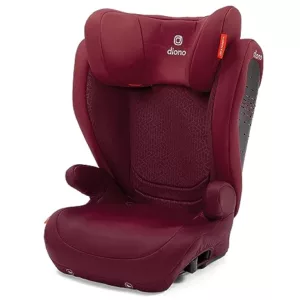
These boosters feature a high backrest supporting a child’s head and neck. They also often come with adjustable headrests and side-impact protection, offering enhanced safety and comfort.
2. Backless Boosters
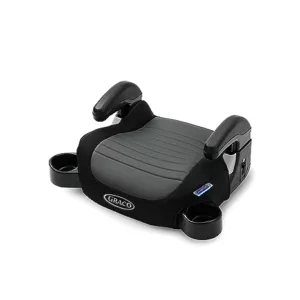
Backless boosters are compact and lack a high backrest. They correctly elevate the child to the appropriate height for using the vehicle’s seat belt. They are often more portable and suitable for older children.
3. Combination Booster Car Seats
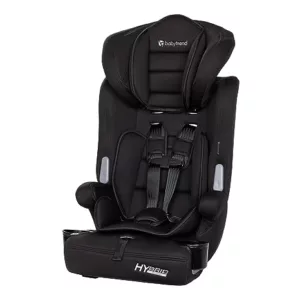
These seats combine a forward-facing harness seat with a booster. They can transition from a harness mode for younger children to a high-back or backless booster as the child grows.
4. Convertible Booster Car Seats
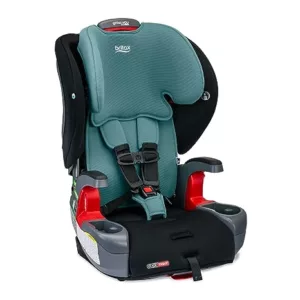
Similar to combination seats, these boosters can convert from high-back to backless configurations, providing extended use and adaptability.
5. Belt-Positioning Boosters
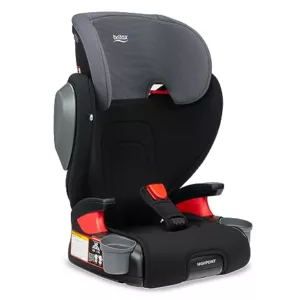
These boosters help guide the vehicle’s seat belt into the proper position across a child’s chest and hips, ensuring a secure fit.
6. Latch-Ready Boosters
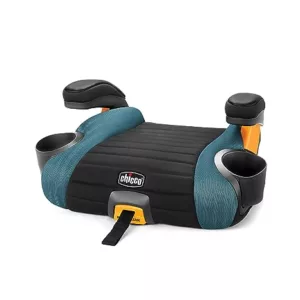
Some boosters come equipped with LATCH connectors to secure the champion to the vehicle, even when the child is not seated in it. This feature prevents the booster seat from being propelled in the event of an abrupt stop or collision.
7. Adjustable Boosters
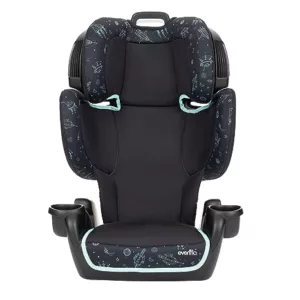
These boosters offer customizable features, such as adjustable headrests, shoulder belt guides, and armrests, allowing a tailored fit for the child as they grow.
8. Integrated Boosters
Often found in certain vehicles, integrated boosters are built into the car’s seat, offering a space-saving and convenient option for booster seating.
9. No-Back Boosters with Head Support
These boosters provide head support similar to a high-back booster but lack the backrest. They are suitable for older children who still need head and neck protection.
10. Youth Boosters
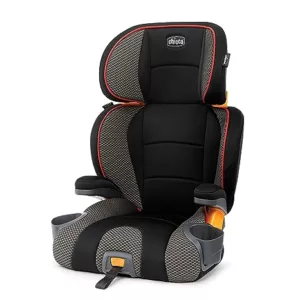
Designed for more extensive and older children who have outgrown traditional boosters but still need to be tall enough to safely use the vehicle’s seat belt.
Selecting a booster car seat suitable for your child’s age, weight, and height is crucial, and it’s essential to adhere to the manufacturer’s guidelines and safety recommendations consistently.
Wrap Up
In summary, understanding the significance of a Booster Car Seat is vital for ensuring the safety and comfort of older children during car journeys. These seats play a pivotal role in providing proper positioning and restraint, elevating the child to an appropriate height where the vehicle’s seat belt can secure them effectively. As youngsters outgrow their convertible car seats, booster baby car seats facilitate a seamless transition into adult seat belts, offering a secure and comfortable solution.
The features of Booster Car Seats, whether high-back or backless, are designed precisely to ensure optimal safety and convenience. High-back boosters, equipped with adjustable headrests and shoulder belt guides, offer comprehensive support. Some even include side-impact protection for added security. Meanwhile, backless boosters are compact and suitable for older children, ensuring a proper seat belt fit.
The advantages of Booster Car Seats encompass proper seat belt fit, comfort during extended journeys, and a smooth transitioning phase. These seats are space-saving, cost-effective, and promote a sense of independence for older children. However, there are also disadvantages, such as the need for developmental readiness and potential installation errors. It’s essential to adhere to manufacturer guidelines and safety standards to ensure the booster seat’s effectiveness.
Among the various Booster Car Seats types, options like high-back, backless, combination, convertible, belt-positioning, and more cater to specific needs and preferences. Choosing the right type based on your child’s age, weight, and height is essential.
In conclusion, the Booster Car Seat is vital in ensuring children’s safety during car rides. By understanding its features, advantages, and disadvantages, parents can make informed decisions to ensure their growing passengers’ utmost protection and comfort. As children transition to booster baby car seats, it’s crucial to prioritize proper usage, installation, and adherence to safety guidelines to make each car journey a secure and enjoyable experience.
Explore More>> Booster Car Seats -Tips
Frequently Asked questions – FAQs
When should I consider using a booster car seat for my child?
Booster baby car seats are suitable when a child has outgrown their forward-facing car seat, usually around 4 years old and at least 40 pounds.
How do booster baby car seats enhance safety?
Booster baby car seats ensure proper seat belt fit, positioning, and restraint, reducing the risk of injury during car journeys.
Are booster car seats safe for all vehicles?
Booster baby car seats are safe for most cars when used correctly. It’s essential to follow manufacturer instructions and ensure proper installation.
How do I choose the right booster car seat for my child?
Select a booster seat based on your child’s age, weight, and height. Ensure it meets safety standards and fits your vehicle correctly.
Are high-back boosters better than backless ones?
Both types are safe when used correctly. High-back boosters provide head and neck support, while backless boosters are more suitable for older children.
Can I use a booster seat for long trips?
Yes, booster baby car seats are suitable for long journeys, providing comfort and proper seat belt fit throughout the ride.
When should my child transition from a booster seat to a regular seat belt?
Children should use a booster seat until they are big enough for the vehicle’s seat belt to fit correctly, usually around 4 feet 9 inches tall and between 8-12 years old.
Read Related Article
